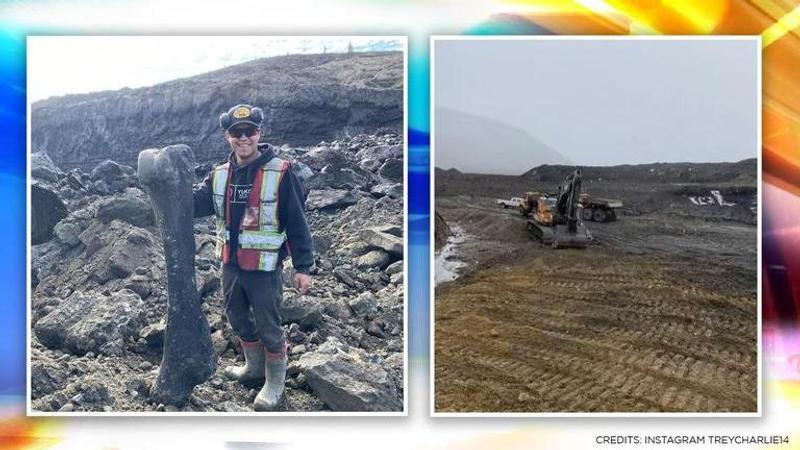Published 16:29 IST, June 10th 2021
Canada miner in Yukon region unearths well-preserved fossil of ancient animal from Ice Age
Canada miner Trey Charlie, who was working with an excavator at the Little Flake Mine around two weeks ago came across a tusk of a mammoth beast.

A miner in the Yukon region in Canada has unearthed a well-preserved fossil of a mammoth beast nearby the Indian River. Yukon Territory of northern Canada is famous for ancient treasures that have been widely excavated from the melting permafrost. In the Klondike region of Canada, otherwise popular for gold, miners had previously found two mummified ice age mammals wolf pup, and a caribou calf. The Canadian miner Trey Charlie, who was working with an excavator at the Little Flake Mine around two weeks ago came across a tusk. The crew paused the project and unearthed more fossils at the site.
Charlie told Canada's CBC it was probably one of the best days he had worked as he discovered the mammoth tusk. He added that throughout the day he was picking bones, ribs, teeth, and “all kinds of things.” The miner posted the photographs of the ancient well-preserved fossil on both his Instagram and Facebook.
The crew was working on 'placer mining’ when the bones were discovered. The method involves using water to excavate, transport, concentrate and recover heavy minerals from alluvial or placer deposits. The team noticed that the excavator had bones falling out of the bucket and that’s when they stopped to search for more, Charlie said. The mammoth bones seemingly belong to the elephants that walked ancient Alaska and Yukon approximately 12,000 years ago.
[Trey Charlie/facebook]
57,000-year-old Ice Age wolf puppy was found at the site
Miners in Canada have been digging out the ice age mammal skulls, bones, tusks, and fossils for more than a century, particularly at Klondike Gold Rush. In 2016, a miner similarly dug out an Ice Age wolf puppy in permafrost around 57,000 years ago. Neil Loveless of Favron Enterprises was searching for gold in Canada's famed Klondike fields when during the process called “hydraulic thawing” he found the fossil of the mummified wolf puppy.
Paleontologists later found that the fossil belonged to the juvenile female pup in the likeness of American mastodons that roamed northwestern Canada. Local Tr’ondëk Hwëch’ people named the pup as Zhur, meaning “wolf”. The well-preserved mummy provided insight into Pleistocene wolves. It was agreed to be displayed at the Yukon Beringia Interpretive Center in Whitehorse back then, where the fossil was cleaned, conserved, and studied.
Updated 16:29 IST, June 10th 2021







